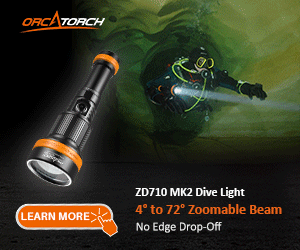hi VSC very interesting. Where have I gone wrong? Reading your chart (1st) it looks like the total time is closer to 50ms, where are you measuring from and to? I am assuming the firing starts at 'ready' point. Are you measuring to final light output at the point of the final arrow?
Anyway, 0.075 of a sec is a lot less than SMoore's article suggested 0.16 or 0.28.
So it must be the automatic camera settings that are causing lost shots of fast moving fish etc. Does this suggest using S setting at say >1/100 to ensure the speed is always capable of freezing most action?
The trigger of the scope is at the point where light is first emitted by the YS strobe, or the center of the screen. With respect to latency (e.g. on camera strobe to YS firing) you can see in the attached screen capture below that the YS responds in about 2 mS. The phototransistor was seeing some of the energy from the on camera strobe even though I did shield the two strobes. Blame it on not using a room with blacked out walls.
When I cited 75 mS that number was only approximate, where I used the time interval from the first emission of the external strobe to the leading edge of the pulse that is actually used to capture the image (e.g. the third pulse). That interval is a little over three divisions, where one division is the number in the center of the horizontal axis (e.g. 25mS/div). That said if you use the 50% point of the decay, then 3.5 divisions might very well be considered the answer, or ~87 mS.
Overall I think my reaction time is more of a factor. On the other hand this measurement doesn't account for any other latency such as time between the shutter actuation and the on camera strobe firing. If the camera attempts to do an autofocus this is a huge issue affecting the ability to capture the moment, especially if the camera uses a contrast sweep instead of phase difference. Though the best answer might be to focus with the camera set to a DOF such that the fish stays in focus (e.g. stays in the box defined by the lenses field of regard and depth of field).
That said a coworker just finished up with the E-M1 mk II and achieved good results with respect to capturing quick moving fish, perhaps showing an improvement due to the phase difference focusing system in the mk II body.
With respect to macro, CFWA and wide angle, with the E-M5, I had good results in both cases with 5+ weeks of diving late last year. Overall TTL has not been a problem in my experience, though what I would like is to get rid of the flash tube in favor of LED while preserving TTL.
.



